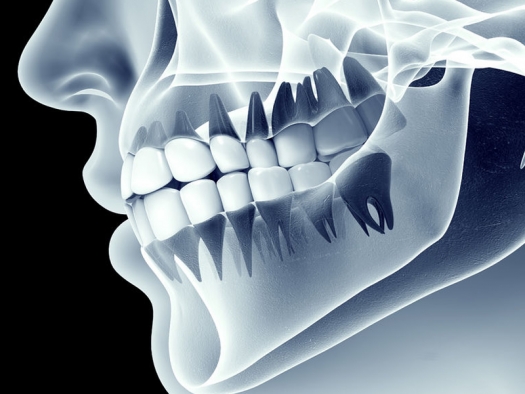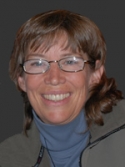JawTeethXray.jpg

© Photo by thelightwriter / 123RF Stock Photo
The Society of Progressive Medical Education (SOPMed) sponsored a day of Dental Ozone Training as a pre-conference option in June of 2018. It was an intriguing day with valuable information. Dr. John Augspurger, DDS, NMD, IBDM was the instructor. Dr. Augspurger has trained extensively in Switzerland using ozone for dentistry and uses it consistently in his practice. The practice is a part of the Human Universal Health Institute (HUHI), creating a new vision for health and services. Dr. Augspurger became interested in holistic dentistry when he worked with Dr. Hal Huggins years ago and has continued his education. HUHI incorporates many detox and healing modalities including infrared sauna, massage, colonics, exercise with oxygen, IV therapies with ozone, IV therapies with Vitamin C, and UBI therapy in addition to the holistic dental practices. The dental office, called Biodentist, incorporates all of the latest therapies used in holistic dentistry including a 3D digital x-ray machine which is paramount in determining if infections in the tooth or bone are an issue affecting the patient’s health.
To start off the day of training Dr. Augspurger lectured on some important elements of health. The use of mercury amalgams has created many health issues including autoimmune and neurologic issues. Historically Pasteur developed the germ theory indicating that disease and illness were spread by germs that you “caught.” Later Prof. Gunther Enderlein explained that the “terrain” was everything not the microbe. By this he meant the health of the microbiome in the body determined whether a person became ill or stayed healthy. Weston Price, who was a dentist, followed up on Enderlein’s theory by traveling the world and studying populations. He shared his findings in an incredible book entitled Nutrition and Physical Degeneration. This is a book that everyone should read. The amount of bacteria in the body can be shocking. For every human cell there are 10 bacteria cells. It is vital that we support the bacteria in our body and work together synergistically.
There are two truths about the mouth: 1) it is the only place in the body where bone is exposed; 2) the tooth is the only body part that cannot expand or swell. If there is an inflammatory response in the tooth, it accepts more healing blood to flush out the chambers but cannot expand. This added pressure causes the pain that is experienced.
There is an interesting environment in the mouth. Plaque, tartar, and bacteria all create biofilm in the mouth. The way to break up this film is to use ozone topically and IV infusions systemically. Inside the tooth you have the pulp and the dentin tubules. The hypothalamus stimulates the parotid gland in the cheek to make a hormone that stimulates the dentin tubules to flow, flushing debris out of the tooth. It is necessary to have a good balance of phosphorous to maintain healthy tooth fluid flow. This direction of flow can become reversed and instead of flushing the tooth, the tooth absorbs bacteria and toxins from the mouth. The result is a cavity. When this scenario exists, it must be addressed systemically and dentally. Typically if the patient has high calcium, glucose, triglycerides, and cholesterol and has low phosphorus they are set up to experience the reverse flow and thus cavities in teeth.
Root canals present a serious problem for all people. Once the nerve has been removed it is impossible to remove all the bacteria in the tubules. The root canal is packed with a latex material, but the dentin tubules are still open. This is an area that is warm, dark, and moist, has no flow, is acid, and anaerobic (no oxygen). Bacteria love this environment. Bacteria sets up housekeeping in the dental tubules producing toxic waste and gases. Each time the patient chews the gases (hydrogen sulfide and methyl mercaptan) go into the blood stream. Research shows that people with root canals in their mouths have a much higher cancer rate, as well as other diseases. Dr. Augspurger calls a root canal a “bug hotel.”
Teeth can be saved. It there is cold sensitivity, it means the tooth is vital and if there is no abscess around the tooth, gut repair and hydration can go a long way to revitalizing a tooth.
Cavitations are not well understood by many dentists let alone patients. When a tooth is pulled there is a periodontal ligament left intact that must be removed completely. This can even involve going into the bone marrow as long as this doesn’t encroach on a nerve. The connective tissue debris must also be removed. If this is not done, the signal to regrow the bone is not received and the debris, bacteria, ligament tissue, and connective tissue are encapsulated harboring bacteria, fungus and other microbes. This can lead to all sorts of health issues. Both 2D and 3D x-ray are needed to reveal the presence of cavitations. This encapsulated bacteria breeding ground will stay stagnant depending on the status of the immune system. Dr. Augspurger feels it is paramount to safely remove all root canal teeth and address all cavitations in order to insure health. Many times there will be no pain with this scenario, but related health issues include rheumatoid arthritis, asthma, inflammatory issues, multiple sclerosis, neurological disease, and cancer. When he addresses these issues he uses the laser to sterilize, does bone graphs with PRF, and ozone in distilled water to flush the site.
Ozone treats 134 serious illnesses. It works because bacteria lacks the antioxidant enzymes in the cell membrane. Therefore it only attacks bad cells, not healthy cells. Ozone carries a negative charge and is drawn to infection. The difference between ozone and antibiotics is clear. Antibiotic drugs drill holes in the pathogen. It spills its guts and dies. The “die off” must be broken down and eliminated from the body. With ozone, the pathogen is broken down into proteins. The immune system will recognize the proteins. An upregulated immune system develops immunity to these proteins and so the benefit is long lasting.
Often times the mouth is too acid. When this environment exists, bacteria thrives. Rinse with ozone water. For dental caries (cavities) use ozonated water under all fillings. This will also prevent post-operative sensitivity. You can also use cotton soaked with ozone. Dr. Augspurger injects ozone gas into the tooth area.
Periodontal disease means a loss of attachment of the gum. Use ozone to destroy the biofilm and work on reestablishing the gut wall with pre and probiotics. For serious periodontal disease the dentist will debride and irrigate with ozone gas or ozone liquid below the gum line. One can also use ozonated oil. Dr. Augspurger uses Quinton water, lyposomal Vitamin D and Vitamin C, and Eveliza for periodontal treatment.
The Human Universal Health Institute grew its own vegetables in their tiered garden by the patio deck. Their chef served us a delicious organic lunch. The afternoon consisted of hands on training using homeopathic injections and ozone injections for various issues. The participants were taught how to install an ozone system in their dental practice. This consisted of a tank of purified oxygen, an ozone generator, all the ozone resistant tubing and syringes. We were taught how to make ozonated water and ozonated oil. A variety of ozone generators were discussed including the Simply O3 and the generator made by Longevity.
When you research your area for a dental practice, ask if they use ozone. More dentists need to get educated for the benefit of their patients. Educational seminars such as Dr. Augspurger delivered are essential considering the damage a dentist can do unknowingly to your health.
To learn more visit the BioDentist website or call 303-333-9000.


